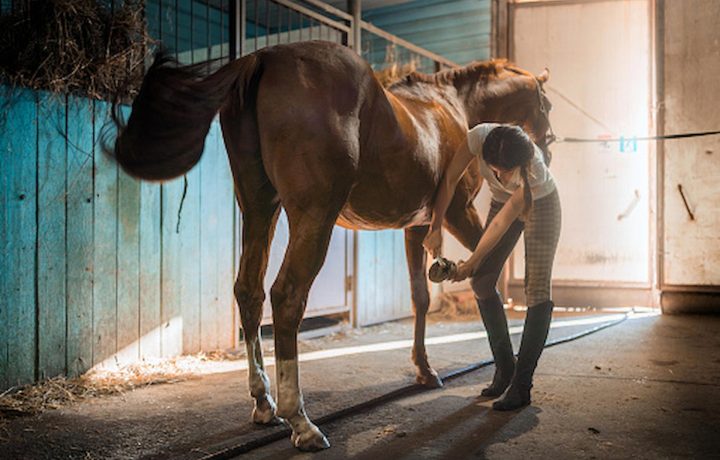Being able to identify changes or issues with a horse’s behaviour can take a bit of time and investigation. In the same way as with humans, you need to understand the root cause of the problem to efficiently resolve it and have a horse that is much calmer and happier overall. There can be many reasons for a horse to develop a behavioural problem and knowing how to spot them and ultimately what to do in this situation is key. From changes in horse feed, improved training techniques and the addressing of any pain, thankfully there are plenty of ways to help.
What are the Types of Behavioural Issues?
There are a few main groupings of behavioural issues to be found in horses, much like other species, and can include:
- Anxiety-related problems, such as separation anxiety or a fear of a farrier or vet
- Handling issues, where they may start trying to lead the handler, pulling back when tied up, refusing to pick up feet etc.
- Stereotypies including head shaking or bobbing, digging, or biting
- Aggression, either towards other animals or humans
- Riding issues, such as bucking, bolting, or refusing to be mounted
- Other abnormalities such as mane and tail chewing or other gnawing
What are the causes?
Any unusual behaviour can be related to two main things; pain or lack of training. It’s very rare for a horse just to suddenly start misbehaving for no reason or decide to make your life difficult for a change. Many types of behavioural issues are rooted within a pain the horse is experiencing, for example, the shaking of their head could indicate discomfort in the mouth from the bit. If the issue is not related to pain, then this could indicate an ethological problem or a lack of good quality training. Like humans, horses require their basic needs to be met to be happy, so if they do not spend time with other horses for interaction, are unable to forage throughout the day or cannot move around freely, changes in their behaviour can occur. This is why if a horse does have all these basic needs met, it can point to a pain issue or the need for further training.
What you can do to help
Identifying the issue is the aim, so it is best to check for any signs of pain first of all. This could be something very obvious such as a wound, but could be internal and difficult to spot by simply looking. Try to get the horse to perform some straightforward tasks to pinpoint where the potential pain is. Trotting in a straight line, for example, along a hard surface could indicate any limb or joint issues. It’s always best to contact your veterinarian so that more thorough tests can be performed or more complex diagnostics such as a scan. If the root cause does turn out to be pain related, such as a dental issue, the right actions can be put in place to resolve it. Other types of pain could be addressed through a course of physiotherapy, whilst pain relief can be addressed with medication
If it turns out not to be pain inflicted, this points towards training issues. This can be as simple as using contradicting aids that confuse the horse, not training self-carriage or using too much pressure to get the response you want. It’s these inconsistencies in training that could be the root cause of a horse’s sudden change of behaviour.
The Importance of Diet
It’s a good idea during this time to review the horse’s diet, as being mindful of their feed can make a big difference to their overall behaviour. Over-feeding can cause a horse to put on weight and become slow and lazy, and if their diet includes a lot of sugar and starch, this could be making them fizzy and spooky. To counter this, having a balanced diet of vitamins and minerals alongside a calorie controlled ration will help them lose weight but ensure they are healthy. If need be, minimise the amount of quick-release energy from cereals and use fibre and oil to provide slow release sources of energy. Research has shown that fibre and oil based diets can result in a lower resting heart rate and a less reactive horse than cereal based rations.
Remember, if your horse is displaying behavioural problems consistently, there is usually a key reason to cause this. If it’s not pain-related and with the right training adjustments and dietary requirements, they’ll be back to usual in time.

